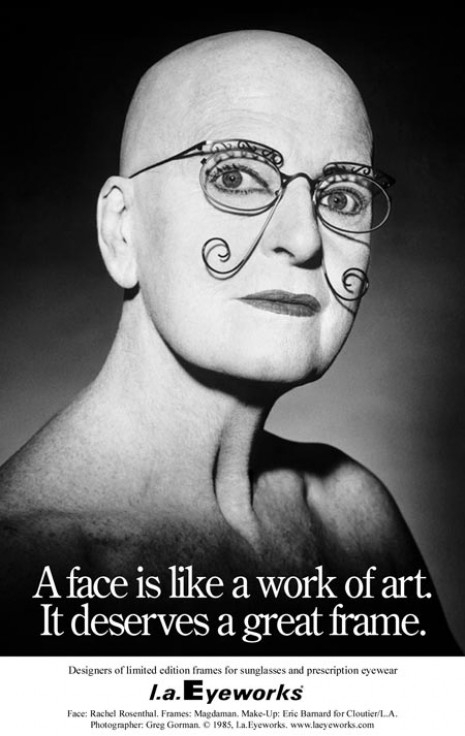
Mr. Novicoff and I got to meet the lovely Rachel Rosenthal today taping next week’s Dangerous Minds episode. She’s awesome and she brought her gorgeous, snow white, part-wolf canine companion, Sasha with her. You know you’re having a good day when it involves meeting a living legend and a “national treasure”—I called Rachel this on camera—of course it’s been said of her many times before—and she comically demurred and said that she’s more of a “local treasure,” instead.
Well that’s true too and if you are lucky enough to live in Los Angeles (some people like snow, I’m not one of ‘em) then coming up the weekend of February 19, for three performances, on Friday, Saturday and Sunday, Rachel Rosenthal introduces her new improvisational theater group, TOHUBOHU! Extreme Theater Ensemble with monthly performances in Los Angeles, thereafter.
From the press release:
The name, loosely translated, means “collision or chaos” which Rosenthal describes as not what the Company does, but the process they go through to do what they do. Each monthly performance will span three nights during one weekend. All performance begin at 8:30pm. Tickets cost $20. Reservations are necessary to insure seats and can be made by calling 310-839-0661 or online via Brown Paper Tickets at www.rachelrosenthal.org. The Rachel Rosenthal Company’s venue, Espace DbD, is located at 2847 South Robertson Boulevard, Los Angeles, CA 90034. Street parking is available.
The Rachel Rosenthal Company’s TOHUBOHU! Extreme Theater Ensemble, the latest offering in the 83-year-old Rosenthal’s remarkable career, is inspired by Jean-Louis Barrault’s concept of “Total Theatre” and Antonin Artaud’s “Theatre of Cruelty.” Echoing Barrault’s and Artaud’s revolutionary notions about theater, Rosenthal’s performance aesthetic integrates movement, voice, choreography, improvisation, costuming, lighting, and sets into seismic experiences. This genre of work, total free improvisation, is completely unique. Nobody knows in advance what will happen – not Rosenthal, not Company members, and certainly not the audience. This uncertainty makes the performances psychologically charged for all involved.
“Improvisational theater is the most difficult art form in the world. You can’t perfect your technique and there are no lines to rehearse,” says Rosenthal, “Everything happens in the moment.”
TOHUBOHU! total free improvisation pieces typically start in a similar manner; there is a group warm-up, then Rosenthal directs the group with a few words — sometimes only three or four. The words she selects reflect an idea she’s been thinking about, something related to a current event, a random verb, or perhaps instructions for the number of elements to include on stage. The studio space is darkened for a few moments. One of Rosenthal’s dogs might run by, wagging its tail, as colored lights and sound emerge from the darkness.
Sets are composed on the spot from lengths of bright fabric, boxes, and folding chairs. Props might be added in by Company members from a large backstage collection of objects that include items such as a dress form, telephone handsets, old books, a houseplant, a bird cage, an oscillating fan, fake plastic flowers, and paper bags. The Company stirs in recorded music, sounds, live music, or perhaps chanting.
These initial seeds germinate a piece. From here, the convulsive physicality of the Company begins. The members’ primal actions operate in concert with each other as well as the formal aesthetic elements of light, sound, props, and physical space. Text, which is primary, even tyrannical, in traditional theater, is absent in uniquely ephemeral TOHUBOHU! Through a mysterious alchemical process, the players act, react, and respond to surprises. They collaborate with each other, and everything around them, to create composition, form, and meaning. Since there is no established narrative to satisfy audience expectations, viewers are forced out of passive complacency as they digest what’s going on and anticipate what might happen next.
Performances function formally in space more like visual art than traditional theater, requiring the audience to actively interpret all the various elements. Results can be either abstract or realistic.
“When it’s good, it’s sublime. And when it’s bad, it can be a painful experience. Much like human existence,” says Rosenthal in a naked assessment of the art form, “Sometimes you walk away scratching your head wondering what the hell you just watched. We embrace that sort of uncertainty and chaos which is counter to highly processed culture.”
For more information visit www.rachelrosenthal.org.